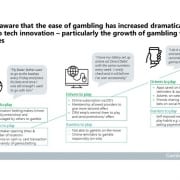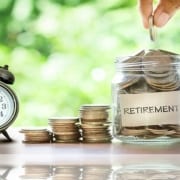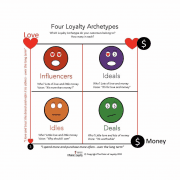THE A.S.S. APPROACH TO CUSTOMER SERVICE RECOVERY
By Guest Contributor Steve Browne, President, Client Services, Raving Consulting, Reno Nevada
In this three-part series, we are going to focus on Customer Service Recovery. That is, we are going to look at how you handle your mistakes, boo-boos, stuff-ups and wrong turns.
The simple fact is that we are not perfect, neither as an organisation nor as individuals. Sooner or later we will upset a customer, make a mistake, keep someone waiting too long, or not deliver on a promise. The question is not whether you are going to make these mistakes (you are), but rather what do you do about them?
Customer Service Recovery is one of the best ways to develop loyal and repeat customers (which is critical in today’s highly competitive markets). When you solve their problems and do everything you can to make them happy, you truly show the customer that you care about them in the long term, and not just for the here and NOW!
We are engaged in the business of playing wagering games against our customers. We take the side of the dealer or slot machine against the player and we have the best of it, the mathematical edge.
Over time it is easy for our customers and employees to develop an aura of competition, an attitude of Us versus Them. This is hardly conducive to building trust in the critical relationship between customers and the casino. And yet trust is essential if you are going to build loyal and lasting relationships.
Following is what you need in order to build effective service recovery:
- Build Effective Recovery Techniques — in order to perform effective service recovery, your staff needs to have an effective technique for dealing with irate customers.
- Build a Powerful Recovery System Within Your Organisation — and speaking of a recovery staff, you need a system of dedicated recovery experts whose job it is to implement your recovery strategies and tactics.
- Build a Powerful Foundation of Recovery Tools and Offerings — you need to be able to offer your customers something of value.
- Train, Measure and Reward for Success — as always, training, measuring and rewarding are key to implementing your new recovery system.
Acting like an A.S.S.
If you are going to build an effective procedure for handling customer complaints, problems, and issues, then it helps to take a look at how not to handle irate customers. You see, in the absence of any training or forethought, we often end up treating irate or complaining customers like an A.S.S. Look at the following scenario and see if you don’t agree.
Customer: I’m upset because your cafe attendant was rude and refused to honour this coupon that you sent me in the mail.
Supervisor: Ma’am, the attendant was just doing their job. Can’t you see the expiration date on your coupon? It’s no longer good.
Customer: Well, I just received it a few days ago. How can it no longer be good?
Supervisor: It is your responsibility to know the rules . The casino puts an expiration date on the coupon because we just can’t have coupons being brought to us months or years after we issue them. We wouldn’t be able to account for them. Surely you understand the need for that. You need to use the coupon between the dates printed on the ticket. And the attendant was just doing their job. They could get fired or have to pay that out of their own pocket if they took it. They don’t make much money and that would really be unfair. Now that you understand the rules, next time try to bring the coupon in during the valid dates.
Customer: Well, I …
Supervisor: And, of course, we want you to continue to be a good customer. How about I get you a 2-for-1 buffet coupon so that you and your husband can get a bite to eat? It’s our treat. Customer: (to another attendant) Hey, where’s that supervisor? I can’t find him anywhere and he gave us an EXPIRED buffet coupon!
You see, when a customer has a complaint or problem, we generally start by arguing with them . After all, they must have ignored or broken some rule, or not followed some procedure. Otherwise they wouldn’t be having a problem. Then, once we’ve set them straight and explained why we can or can’t do certain things because of rules and regulations, well, then we try to suck up and make the customer happy by offering some comp, gift or other item that we think has value for them.
Finally, we tend to stay away after we have handled a problem. After all, the squeaky wheel got the grease, so let’s not get near them anymore. They may start to complain again, or find something else wrong to hassle over. See, we treat them like an A.S.S.
We A — Argue, S — Suck Up, and S — Stay Away.
If you are going to practice effective service recovery, then you need a better procedure than this one in order to delight guests and make them loyal repeat customers.
Look for Part II and III of this series in coming weeks.













